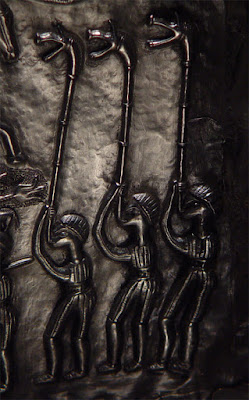A cancer diagnosis left me feeling helpless and dismayed. I always looked after my body - exercised, ate healthy food, etc. I felt many things were out of my control, after all if I had been doing everything "right", what was the point? About 18 months post-surgery, I was physically improving but needed help with scattered and angry emotions. I have found a good way to create positive feelings is to use my experience to help others, by raising awareness and helping charities. I quite like the challenge of finding something useful I feel able to do. I have selected a few charities that helped me personally and a couple of other related ones: Paul's Cancer Support Centre, a small local centre, Maggie's London and Ovacome, which jointly hold a monthly meeting for younger ladies with ovarian cancer, Ovarian Cancer Action, which focuses on raising money for ovarian cancer research, and Target Ovarian Cancer, who tend to focus on campaigns to lobby MPs and policy makers to improve diagnosis times and treatments.
I took part in a bucket collection yesterday for Ovarian Cancer Action. It involved standing in a cold Victoria station, shaking some sleigh bells and looking faintly ridiculous in a glittery teal (charity colour) Santa hat. It was quite a tough gig - people are understandably busy and concerned with looking for their trains. I focused on getting people to look at us! Earlier in the day, there had been a choir to help out in the morning, which had encouraged people to linger and donate some coins. The chief fundraiser told me that one year a supporter had bought along a St. Bernard dog and her puppy, which had substantially increased donations with people wanting photos. Yesterday I took over from a lovely family with two young children who looked very cute jumping around with their jingle bells. The little girl was very serious, telling her mum off for talking to me and encouraging us to "focus".
The year before last I helped out at a bucket collection for the same charity - on Sunday 15th March, Mothers day. It was very moving to receive small donations from the public - one man said he donated because he had lost his mum to the disease. It was also lovely to have mums encouraging their children (or the other way round) to put some cash in my bucket. But my main impression from the day was meeting Abbie, a lovely trainee nurse who had sadly lost her mum to ovarian cancer. She was bravely taking part in fund-raising on Mother's day in her memory and was a real credit to her family. It is not easy standing there and talking to the public, especially if you have a personal connection to the disease, but it does make you more determined to do something. Even if you only end up with a few pounds, you see people looking at your banners and badges and it helps to raise awareness.
I find the collection days satisfying but not easy; however, there are obviously other ways to help charities. An enjoyable thing I have found is to review books for Macmillan. If you join their Cancer Voices network, you can select from a range of advertised opportunities that are listed for patients/survivors/carers/relatives to help other charities. There are new relevant books published regularly which Macmillan ask to be reviewed in order to recommend them or otherwise to hospitals, support groups, doctors or nurses, etc. You are sent a copy of the book and are asked to provide a review based on set questions, such as who do you thing the book is suitable for, what did you like about it, etc.
Other things I have done for charities include: bucket collections at Sainsbury's and the Royal Albert Hall; taking part in a focus group for Eve appeal (they were discussing the implementation of a helpline with a nurse to discuss people's concerns, this has now been put in place); signed an e-petition on Change.org 31st March as part of Ovarian Cancer Action's BRCA Right to Know campaign for Ovarian Cancer Awareness Month 2015. It called for all women with a diagnosis of ovarian cancer to have access to BRCA gene genetic testing - a mutation in one of these genes increases the likelihood of developing ovarian cancer by around 50%; I have taken part as a catwalk model at Tea with Ovacome at the Mayfair for several years now; I have given talks to raise awareness with GPs and nurses, and also to a group of patients at St Goerge's Hospital.
These things are not done totally altruistically, they ALWAYS help me to feel better about myself, to use my hideous experience and turn it into positive action.
Always a good idea to increase the cuteness factor when collecting!

















